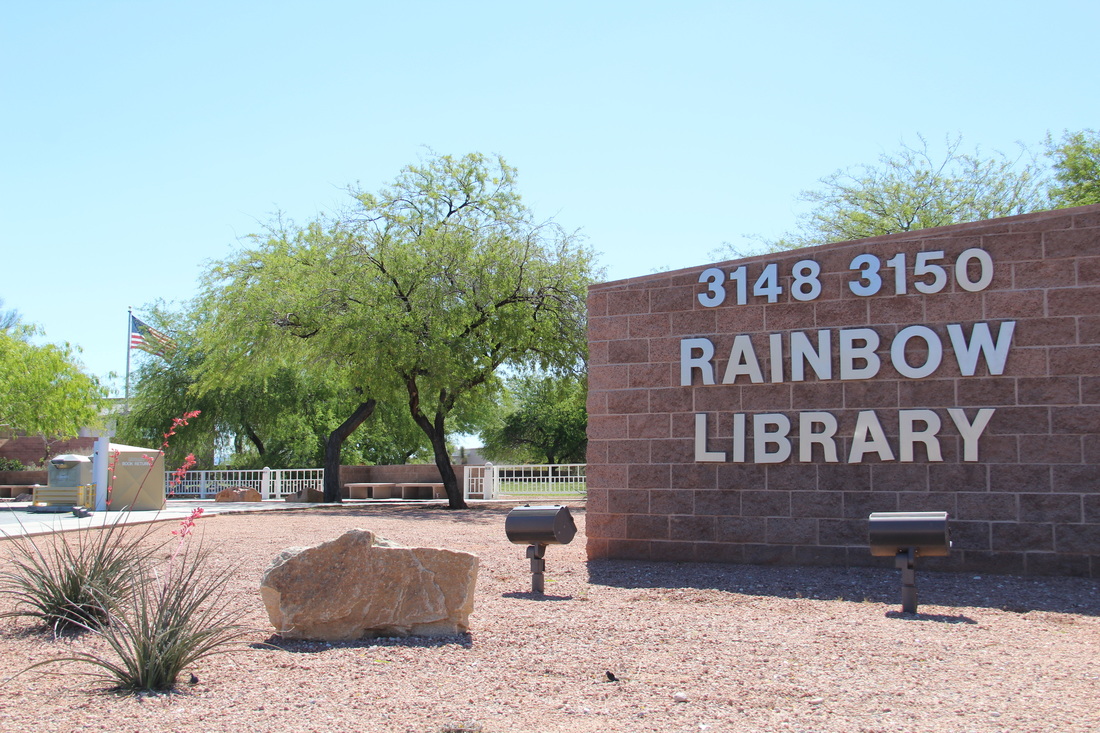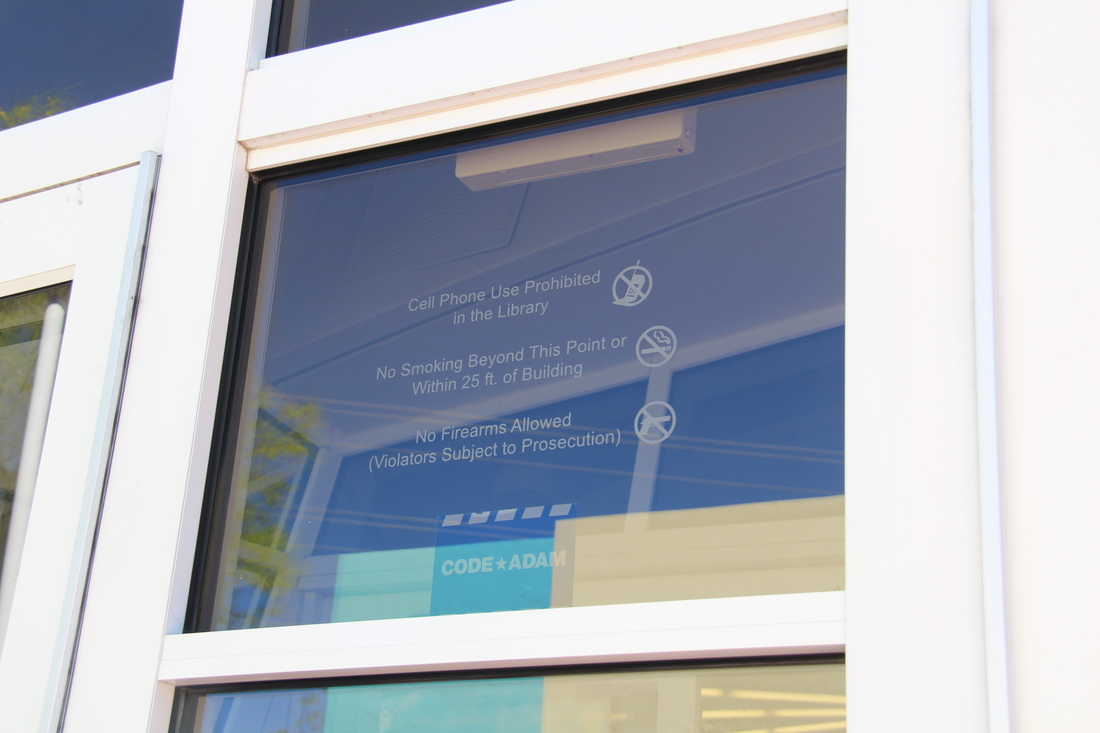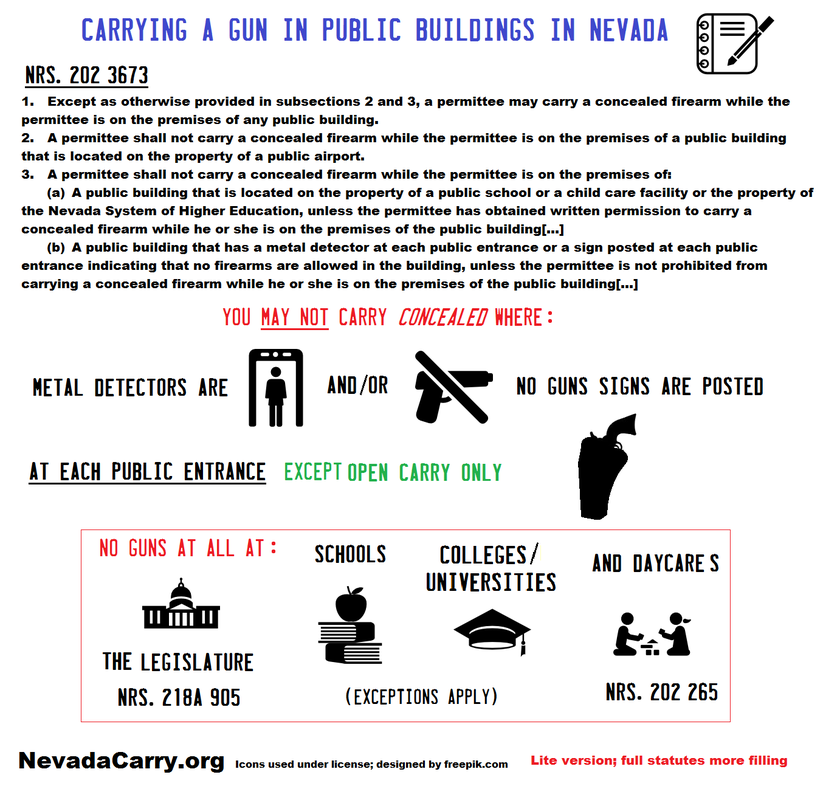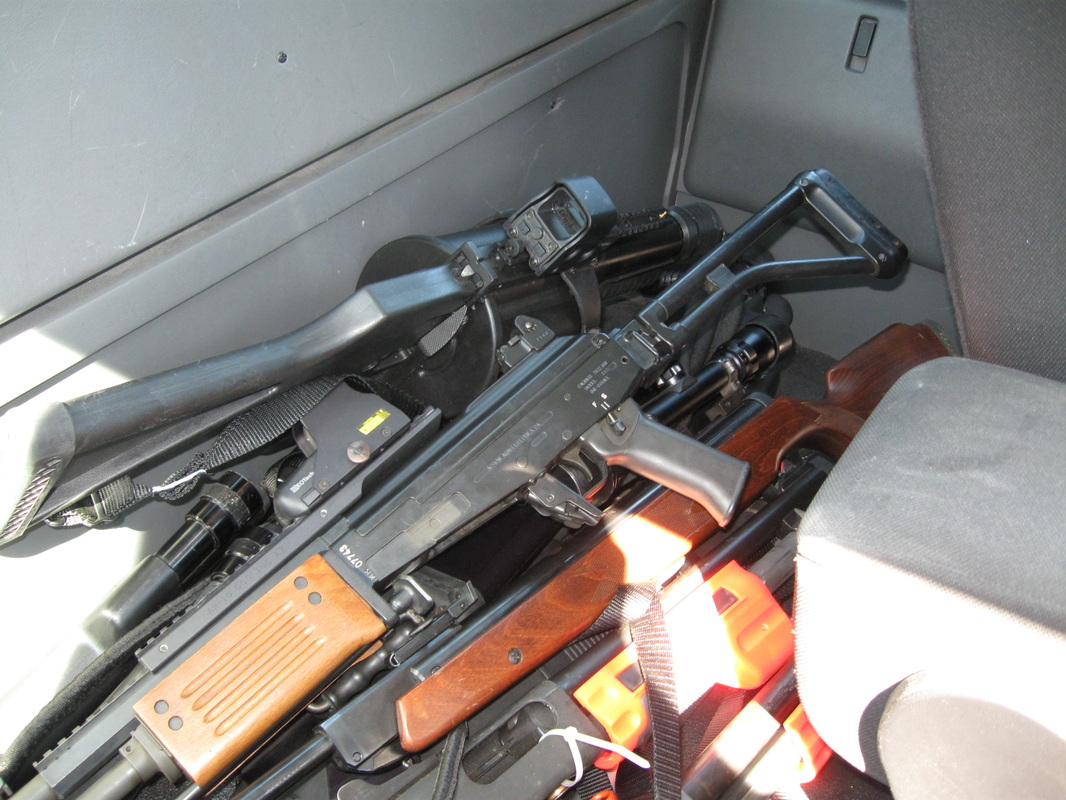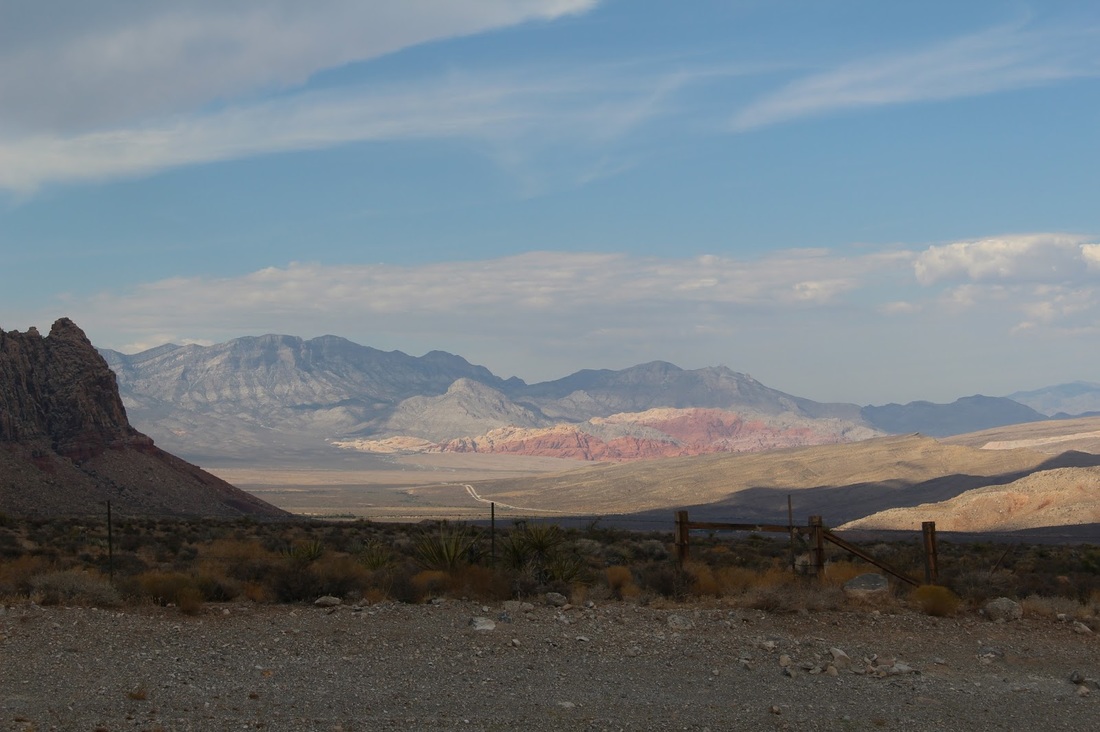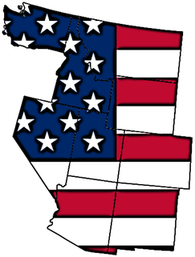Armed Hitchhiker in OregonJeremy Bryant doesn’t always hitchhike, but when he does he begins by asking, “How do you feel about picking somebody up who has a .357?” Surprisingly, most Oregonians feel good about it, if the documentary he filmed is any indication. Article at Guns America. Jackson, Wyoming, church hold gun safety workshopFirearms Safety for Responsible Folks, brought to you by St. John's Episcopal Church, Hansen Hall. "Won't Someone Please Think of the Children?!"Why the Las Vegas-Clark County Library District bans open carry. Book Review: Instructor Mac's ChoiceThe Third Bullet by Stephen Hunter
I used to be a voracious reader, and as I slow down in life, I'm finding that it's a joy to which I'm relishing the return. I've turned my eyes toward Stephen Hunter. If the name is somewhat familiar to the less read, he's the author of Point of Impact, which the movie Shooter, starring Mark Wahlberg, was based. Circumstances led me to start with his latest Bob Lee Swagger novel The Third Bullet. It will neither disappoint fans of suspenseful thrillers, history, nor firearms enthusiasts, as Hunter has fulfilled his reputation as an author that knows his guns. In short, our hero is now 67 years old, and is compelled by an oddity of chance finding, in the hands of a widow with a third-hand story, to tackle the never-really-ended investigation into the assassination of President John F. Kennedy. As the novel progresses, you will likely be constantly thinking: “Holy ****, I'll bet that's how it really happened!” Hunter makes good use of long-standing plausible conspiracy theories, but blends them into a thrilling tale full of intrigue and, yes, more than a couple gunfights. He's done his research. FBI Special Agent Memphis rejoins the cast, conveniently as the Special Agent in Charge of the Dallas Division. He gets his gratuitous moments as the foil, and to help set up saving Swagger's ass, of course. The action takes Swagger through Baltimore and Moscow, in a chain of evidence through Mexico City, as the arrows keep coming back to point to one of the crazier possibilities that is more easily laughed off than given meritorious consideration. Spoiler alert: Lee Harvey Oswald was set-up! Mac is US Navy veteran, and a licensed and certified firearms instructor specializing in Nevada firearms laws. A mother legally openly carrying her handgun was unlawfully arrested at the Rainbow branch of the Las Vegas-Clark County Library District (LVCCLD) back on March 16. This is the latest incident in a string of Second Amendment abuses by the district which culminated in the defendant, Michelle Flores, being detained in front of her young children. She was also threatened with having her children removed by CPS. Ultimately, Flores’s handgun was seized and she was given a citation for trespassing before being released at the scene. A lawsuit has been filed by Flores, who is represented by Ashcraft and Barr. A copy of the complaint is available here. Flores seeks damages pursuant to the provisions of SB 175/240 which allow for up to triple damages for any party adversely affected by an illegal firearm ordinance. Openly carrying a firearm in a public library is legal in Nevada. In fact, several library districts, including the Henderson district and the Washoe District, recognize this fact. State law prohibits government entities from banning firearms from their buildings under state firearm preemption laws. Only the legislature can regulate where and how firearms can be carried. Furthermore, the library’s own Rules of Conduct don’t even prohibit openly carried firearms, only concealed firearms pursuant to state law. Outside of Nevada, the Seattle, Washington library changed its policies on open carry and the Capitol Area District Libraries (CADL), Michigan, lost a suit for violating state law by preventing the lawful open carry of firearms. Additionally, Texas libraries are not allowed to have firearm bans as well, which includes the state's recent decriminalization of open carry. On the concealed carry end, the Denver Science Museum dropped its concealed carry ban because it was unenforceable per state law. The Incident Flores told us: I was inside for about an hour with no issues looking for books for my children. I passed by multiple staff members with no issues. I checked out a few books and was about to exit the library when the security guard began calling after me to tell me firearms are not allowed. I attempted to talk to the hired guard about the law and he summoned a library employee. She brings up an invalid rule the library has that they can prohibit firearms. She then summons the police. No one during this time ever asked me to leave the premises. After the officer’s arrived, I attempted to film the interaction and was instead placed in handcuffs with my phone and firearm taken from me. This all occurred in front of my young children (5, 3, 1). The officers never attempted to find out my side of events. Flores was released with a citation for trespassing (NRS 207.200). A librarian read her the trespassing statement and banned her from library property for a year. Flores's friend arrived to assist her and videotape the encounter. Nevada Carry has reviewed the video. Though her friend was observing the encounter and not interfering, he was ordered to leave the area or disarm. He chose to put his gun in his car. A confrontational officer approached him and said “That gun looks like it’s partially concealed. […] It looks like it’s black under there.” Flores’s friend informed the officer that he had already removed his handgun. The officer asked the friend to identify himself and what he was doing there. “You’re not involved here, so leave,” the officer said. “Cause you’re not involved with what we’re doing at all, so go ahead and leave here. We’re talking care of business here. Now I’m advising you once. That’s your one warning. I’m going to give you one warning, so leave.” This behavior isn’t unusual. A videographer Mitchell Crooks was beaten in 2012 by an LVMPD officer who was upset with being filmed. An officer suggested that even though Flores’s friend’s holster was empty, he could be considered to be carrying concealed when the officer saw the holster. The cooler officer called out that he and Flores’s friend already spoke. The aggressive officer then walked away. Flores was then uncuffed and signed the citation. The officers were apparently unaware of state firearm preemption laws. The librarian read the trespassing warning to Flores and prohibited from visiting any LVCCLD library for one year. No trespass occurred Flores was cited for trespassing, a violation of NRS 207.200, despite never actually violating any provisions of that section. The violation has two elements. Subsection (a) Going into a building "with intent to vex or annoy the owner or occupant thereof, or to commit any unlawful act." First, Flores had no intent to vex or annoy the library staff or the patrons. Additionally, there was no alarm or panic, nor did she behave in a disruptive manner, which might constitute other criminal behavior. Second, Flores did not enter with intent to vex or annoy. Her behavior would have been otherwise unremarkable, save for her handgun. There was no reports of disturbed or alarmed patrons or any other criminal behavior. Had Flores somehow been committing a disturbance, Metro probably wouldn't have taken nearly an hour to arrive. Most importantly, no unlawful act was committed. The library district has repeatedly cited NRS 379.040 as its authority to illegal ban firearms. That section gives only the board of trustees the authority to make reasonable regulations. The library Code of Conduct, which was last approved by the board of trustees in an unrelated update in Jan. 2011, only prohibits concealed firearms in conformance with state law. The district cites a policy that they have circulated to staff which was never approved by the board of trustees (at least since 2004). The policy is merely an administrative response when citizens' objections forced them to manufacture something. Since the ‘policy’ was never approved the board of trustees, it is not an enforceable regulation per NRS 379.040. District bureaucrats made up the ban. The library district's own administrative policy, even if somehow considered enforceable, is specifically prohibited by state preemption of firearm regulation. Such a policy is null and void as the district has no authority to regulate the carry of firearms. The officers made an arrest on false pretenses at the behest of the library staff. LVCCLD is so bent on illegally prohibiting firearms that it is willing to see mothers with children arrested and to invite a lawsuit, at taxpayer's expense. Unfortunately, Metro police administration placed its officers in this position by failing to properly educate their employees on the legality of open carry and changes in state law. This isn’t the first time Metro illegally interfered with an open carrier because of officers’ ignorance. LVMPD officers also ejected a legal open carrier from the Clark County Fair. 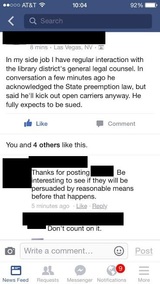 The Las Vegas-Clark County Library District knowingly and willfully violated the provisions of firearm preemption. In November, a group of citizens warned the board of trustees that their administrators’ actions were flying in the face of state law. Despite repeated public protest and outcry, the district has continued its abuses and usurpations. Library counsel, attorney Gerald Welt, stated in a private conversation, which was recounted on Facebook (see image) that he was aware of the preemption law, but open carriers would still be kicked out and he expected the district to be sued. If these allegations are true, they are totally irresponsible. Taxpayers should not be forced to bear the burden of officials’ malfeasance. Shouldn't That Be Illegal? Nevada hasn't overlooked open carry in public buildings as some sort of bygone tradition that legislators have forgotten about. A look at other states, as we have done with Frontier Carry, will show that in the Intermountain West, the ban on openly carried firearms in public buildings is an exception to the rule. Only Colorado expressly allows a blanket ban of openly carried firearms, while exempting concealed carry in those public buildings without security screening. Texas, which recently decriminalized open carry for licensed individuals, enacted open carry of firearms dating from the 19th Century to prevent blacks from carrying arms. In fact, an analysis of these states, plus the Idaho Supreme Court case of Re: Brickey reveals that open carry is recognized as the constitutionally protected form of carry. Nevada has prohibited unlicensed concealed carry in one form or another since the early 1900s as have most of our neighboring states. The concealed carry of firearms one hundred years ago was only then just beginning to lose its reputation as something only a thief, bandit, or burglar did. Hiding a gun implied that the person carrying was also trying to conceal criminal intentions. Only with the vilification of guns starting in the 1910s through the 1930s did self-conscious citizens desire to transition to concealed carry. Yet only rarely are openly carried weapons regulated and almost always in blanket 'all weapons' bans, such as at schools. It is tacitly understood that open carry in all but the most specific of circumstances, is none of the government's business. So no, allowing openly carried weapons in public buildings isn't a legislative oversight, rather it is recognition that government has no power to regulate the open carrying of arms. Nevada's gun laws aren't some error or accident of history. Members of the public can contact the library district to express their opinion at [email protected] or 702-507-4400. Operations Direction Jennifer Schember can be emailed at [email protected]. Cross-posted from NevadaCarry.blogspot.com
Every week, we'll feature a round up of the noteworthy and interesting gun-related things happening on the frontier; and whatever might catch our fancy.Douglas County, CO, School Cops Buy ARsThe Douglas County, Colorado, school district police purchased ten semi-automatic Bushmaster AR-15 style rifles for its patrol officers, ABC7 Denver, reported in a surprisingly unsensational way. Of course, in other places, LAUSD (California), parental shorts were browned when it was learned that the school district police obtained military surplus AR-15 style rifles, resulting in the rifles return to military custody. The police union boss said: There’s an inaccurate picture being painted by a lot of people out there that our officers are walking around all day long on these school campuses with rifles strapped across their body. And that’s completely inaccurate. Crazy California mother made the usual illogical anti-gunner argument: I would say you fight fire with fire. So maybe that’s a good policy. But I don’t know because I’m really against arms and firearms. Gun owners will know that semi-automatic AR-15 is an excellent self-defense and patrol rifle platform due to its versatility, magazine capacity, and the ability, with the right ammo, to penetrate obstacles and body armor. Interestingly, 5.56mm rifle ammo penetrates less than some pistol rounds (mainly because it’s designed to tumble through flesh). The Kent, Washington, PD found: The ranges of gunfights have increased, due largely to better tactics on the part of the police. The distance from curb to porch, in most suburban neighborhoods, can be twenty-five (25) yards or more; this is dangerously pushing the capabilities of most pistol shooters. From Police Chief Magazine: With better police weapons capability, the duration of a violent confrontation and the volume of gunfire may be reduced, thus limiting civilian casualties during the encounter. 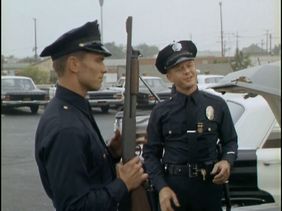 Jim Reed with his Ithaca 37 and its totally not scary wood furniture Jim Reed with his Ithaca 37 and its totally not scary wood furniture Of course, shotguns have their benefits and not everyone is ready to dump them. While the black rifle should be feared, the sight and sound of even a supposedly more tame looking wood-stocked riot-gun of Adam-12 fame being shucked by Deputy Bubba is intimidating. One benefit is that with buckshot, accuracy is less important, although the Hollywood trope of pointing the shotgun in the general direction of the bad guy while the .33” balls magically find their target is less than accurate, excuse the pun. Slugs are incredibly powerful, accurate, and have top-end stopping power. In fact, many law enforcement agencies mandate the use of slugs, calling their shotguns “urban rifles.” Rifled shotguns can reach out to the 75 yard range maximum seen in most (not all) police shootings. Yet slugs can’t do it all, like reliably penetrate body armor. Of course, some servicemen might have a bone to pick with the penetration capabilities of M855, which isn’t as dangerous to cops as the Obama administration would love to lie to you and the trauma would kick your ass. Veteran cop and legendary firearms instructor Massad Ayoob says there is a place for both the patrol rifle and shotgun. Misc.Dumbass of the Week: Las Vegas Toddler Accidentally Shot By Father Couple of things: Who takes their toddler to a car wash in the middle of the night and cleans their gun there? Something is just not right with that picture. Truth be told, the dad was probably improperly fingering his trigger and shot his kid. Going out a limb here, but this is probably the kind of person who doesn't bother taking any training courses or a "gun license" (no such thing Fox 5). Will the father face criminal charges? How about manslaughter? 99.9% of guns don't fire themselves. Also, keep an eye on the Nevada Carry blog for important news... Israeli-American SWAT RiflesThe Firearm Blog posted an article about Kalashnikov pattern rifles used by American cops, featuring the Glacier County Sheriff’s Dept, Montana, and decidedly not-one-of-our-states, the Ventura County Sheriff’s Office, California, of which I may or may not have a picture of one of the famous Galil's stacked up with about 40 other SWAT weapons. The semi-auto Galils were used for improved dust and mud performance in the fairly rural county just north of LA. And yes, that is a airgun used for less-than-lethal purposes.
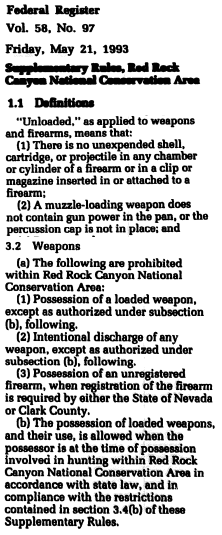 For gun owners, Red Rock is a unique carve-out in Nevada because it is the largest swath of land open to the public where carrying loaded firearms is prohibited. The red rocks and sandstone cliffs of Red Rock Canyon National Conservation Area that dominate the western skyline of Las Vegas is a BLM-administered area, separate from the National Park System, which does allow firearms. Long have local gun owners bemoaned the outmoded regulations without attempting to solve the problem. Congress won’t remedy this right on their own, but we can ourselves. Readers are aware that state law prohibits local and state agencies from making their own firearm laws, including state parks, except for regulation unsafe discharge of firearms. Some may be familiar with the change to federal law under President Bush’s tenure that permitted firearms in National Parks (including recreation areas like Lake Mead) as long as the weapons are carried in accordance with state law. Specifically, loaded firearms are prohibited in Red Rock. Ammunition and magazines/clips cannot be on or in the weapon, except for legal hunting as permitted. The excerpt regarding weapons is below, while the full Supplementary Rules are here. The penalty is up to a $1000 fine and/or 12 months in federal prison (43 CFR 8360.0-7). How stupid is it that you can have a gun, and even carry it on your person, but it has to be unloaded? The rules will not prevent a criminal from carrying illegally or prevent illegal target shooting. There is no benefit of this rule and the few seconds spent loading a gun could be the few seconds that give a bad guy the advantage or allow a cougar to strike. On top of that, it is immoral to effectively disarm the citizens who won’t carry at all because they don’t understand the nuances of the law. Basic firearm safety dictates a firearm should be handled as infrequently as possible. The best place for it is left alone in its holster. Loading and unloading a firearm introduces unnecessary variables that could lead to a negligent discharge. Creating the potential for an accident negates any alleged gains. Also, in a self-defense scenario when adrenaline is pumping, fine motor reaction is lost, making it more difficult to load and chamber a round before firing. Legal basis These rules were added shortly after Red Rock’s official inception as an NCA. The supplementary rules for Red Rock were published in the May 21st, 1993 edition of the Federal Register, which is the federal government’s journal. Federal law allows the interior secretary (via the BLM’s state director) to make supplementary rules and orders for the national conservation areas under his jurisdiction (43 USC § 1701). Federal law is broken down into three main segments: The United States Code (USC), roughly analogous to the Nevada Revised Statutes (NRS); The Code of Federal Regulations (CFR); and internal federal agency regulations, which are published in the Federal Register. Agencies are authorized by Congress to make regulations in their area of operation, such as the ATF’s various administrative rulings. Now to make specific ‘park’ rules, based on the unique needs of the given area, the BLM’s state administrator can make supplemental rules (43 CFR 8365.1-6), as long as the public is given notice of the proposal and time to make comments. Other places No other federal ‘parkland’ in Nevada prohibits legally carried self-defense weapons, loaded or unloaded, including the two other conservation areas, Sloan Canyon (south of Henderson), and the Black Rock Desert. Sloan Canyon is managed by the Southern Nevada BLM office, which manages Red Rock. Only two other Conservation areas, the Wallace Forest in Idaho and the San Pedro Riparian area in Arizona, have firearm possession prohibitions. Both are outdated as well (2000 and 1989, respectively). Even in California, the ‘Lost Coast’ conservation area allows loaded open carry under that state’s quirky carry laws. As mentioned earlier, National Parks and Wildlife Refuges allow firearms in accordance with state law (§ 512. pg. 31 “Credit CARD Act of 2009”), though guns are still prohibited inside federal facilities (18 USC § 1930). How to remedy The public should be allowed to carry firearms loaded for self-defense, not just in light of the Second Amendment, but because of the dangers inherent in today’s world. One should not be forced to be disarmed or carry a ‘neutered’ unloaded gun because of an outdated regulation. Heaven forbid anyone is attacked by a cougar or coyote, not to mention potentially being the victim of a crime at, or to/from, Red Rock. The right to loaded self-defense should not disappear because someone crosses an invisible line into a wild desert park. There is nothing inherent in Red Rock that makes visitors any less susceptible to danger. Taking into consideration the state laws of Nevada and no prohibition on other federal recreational lands, Red Rock’s loaded gun ban is an anachronism. 1993 was a different time in America. Handgun ownership and self-defense carry was not nearly as popular as today and “shall issue” concealed weapon permit laws had yet to come to Nevada and sweep across the nation. As more and more people recognized the need for self-defense weapons and the attitudes in the country have changed, it is time that unusual, out-of-touch regulation disappear. The rules are not federal law and do not require legislation to change, which would be a pipe dream with the current president. Rather, a gentle campaign of public pressure through petitioning the state director John Ruhs to amend the Supplemental Rules to allow loaded firearms to be carried for self-defense. Additional support could be sought from Nevada’s republican Congressional delegation (the Democrats probably wouldn’t agree). Public pressure can change things. It may be as simple as a few nice, well-written letters. Imagine if thousands of Nevadan gun owners, hikers, bikers, and concerned citizens petitioned the BLM to restore their right to effective self-defense? Notwithstanding the supplementary rules, 43 CFR 8365.1-7 says that state still law applies, meaning that Nevada’s concealed carry laws and lack of an open carry prohibition or ban on loaded handguns in cars would not be illegal. So there is recognition of state law already in place, though not as specific as one would hope. Temporary closure orders for events such as Burning Man would probably require some sort of federal preemption legislation, but given the highly specific nature, limited duration, and legitimate concerns (hippies+drugs+guns=bad idea) make this a more palatable exception rather than an outdated blanket prohibition on loaded firearms. We are asking for a small change to the law to bring Red Rock in conformity with other federal areas and the rest of Nevada. We are not asking to allow target shooting with its attendant trash and safety problems. There will always be the leftists (often involved in environmental and outdoors groups) and anti-gunners who will ill-rationally protest the restoration of gun rights, but rights and truth win over hype and lies any day. On top if it all, guns are already allowed in Red Rock, just unloaded. Many practice unloaded open carry where the pistol is on one hip, the magazine on the other, and can be loaded in an emergency with a quick reload and rack of the slide. The unloaded guns haven’t hurt anyone or the wildlife; why would loaded guns make any difference? So gun owners; are you on board? Sign the petition here! These ratings will upset people. It will overturn popularly held conceptions of states traditionally considered ‘gun friendly.’ Imagine if a state got a mark down every time you had to leave your gun in the car, unload it, or simply leave it at home. That’s how this list works, after a fashion. States gained or lost points for their lack or presence of certain laws, how easy it is to get a permit, and how strictly or loosely open/concealed carry is regulated. My ratings are weighted towards the states where one who holds a concealed carry permit can legally carry a firearm, in any manner, in the most places possible. The less restrictions, the better. Each state is rated in comparison to the other states, not off a universal standard. This list is subjective and your mileage may vary. Basically, the one general rule of thumb I used could be described as: How many places can I carry a firearm, either openly or concealed, and with the least confusion by business owners or police? I also wanted to tackle the popular conception that simply having a form of “Constitutional carry” automatically puts a state at the top of the list by showing all the ‘catches’ to where one can actually carry. OverviewFreedom to Carry This category looks at the states with the least restrictions of places people can carry, either openly or concealed. Best over-all states: 1, Utah; 2, Idaho; 3, Nevada; 4, Arizona Utah takes the list, despite requiring unlicensed open carry to be unloaded, because the protections for those with concealed firearm permits and lack of gun-free zones surpasses all other states. State preemption is so strong that open carry by permittees at schools and colleges is legal instead of requiring the guns to be concealed. Idaho is a close second and would be in first place if they had a stronger campus carry law. Nevada takes third because the only restrictions are no campus carry and government buildings can post ‘no guns’ signs and prohibit concealed carry, but not open carry. Arizona, traditionally ranked highly for having ‘Constitutional’ permitless concealed carry, falls short because of the amount of restrictions, such as bars/restaurants and posted government buildings, where you cannot carry. Least concealed carry restrictions: 1, Utah; 2, Idaho; 3, Nevada; 4, Colorado Montana, New Mexico, and Wyoming all restrict concealed carry in far too many places, while openly carried firearms are legal and haven’t caused any apparent problems. Ironically, while Colorado law is quite unfriendly to open carry, concealed carry is well protected, even within liberal Denver. Washington has the easiest permit to get, while Utah's permit is recognized by the most states (a popular choice for non-resident permits). New Mexico has the hardest and most onerous process. Best open carry states: 1, Idaho; 2, Wyoming, 3, Nevada; 4, Montana Idaho and Wyoming basically don’t regulate open carry at all, and Idaho has cemented open carry as the constitutionally protected form of carry with the court case Re: Brickey. Nevada places ahead of Montana only because Montana has some concealed carry laws businesses or police confuse with prohibiting open carry in a few incidents I’ve researched. Utah would be the worst due to unloaded, open carry being required, but if you have a permit, it’s the best. Best and Worst One Attribute
The How and WhyArizona Arizona has been widely praised as a land friendly to the carry of a gun. In contrast to Texas, which only legalized open carry this year, or California, Arizona certainly is gun-friendly. Most of the praise has been for “constitutional carry” or permitless concealed carry. While open carry has always been legal in Arizona, and somewhat more common than in other states, permitless concealed carry was only approved in 2010. Having permitless concealed carry doesn’t elevate it above the rest of the states, which restrict firearms in fewer locations. Simply having permitless carry for anyone over 21 does not invalidate the other restrictions. In particular, I add a lot of weight to being able to carry while drinking (or eating dinner, as the case may be) because at the times and places people usually do these things, they can become crime victims. It’s a legitimate use of government power to prohibit carrying a firearm while intoxicated, but experience from other states, such as Nevada and Utah, where bar/restaurant hasn’t caused widespread problems, doesn’t justify Arizona’s ban. Arizona falls far short of top place because of all the caveats when/where you can carry. Not being able to freely carry at dinner or while drinking takes away the whole appeal of visiting Arizona and going out for a drink for me. Arizona is actually far more regulated than most people think, so sorry, it does not take top place. Cons
Colorado On a subjective basis, Colorado is tied for last place with New Mexico, however statistically, I have graded Colorado higher because it has an easier concealed carry permit process and affords concealed carry a lot of legal protection. Colorado is the California of the Intermountain West, which would probably not surprise or offend long-time Coloradan’s who have watched the Californication of their state. First, Colorado’s judiciary seems wholly sold out to gun control, finding in laughably ill-logical opinions that Denver’s gun control regime—which long banned open carry, standard capacity magazines (20+ rounds), and the mythical assault weapons—was constitutional. In our country where the rule of law being respected by judges is now a spotty thing, it’s no real surprise. Colorado’s cons are:
Idaho Idaho is pretty close to ideal. Open carry is recognized by the state to be pretty much beyond regulation (save for schools, jails/prisons), and state preemption is well-established. Idaho loses half-a-point for concealed carry only on campus. The dual-level concealed carry permits (Standard and Enhanced) causes Idaho to lose points because it creates confusion and leads and other states do not recognize the Standard permit. Idaho needs to expand campus carry to cover open carry like Utah. “Constitutional carry” permitless concealed carry being restricted to only Idahoans is a huge caveat and hardly worthy of the term “Constitutional.” It’s merely a benefit to state residents. It’s dubiously constitutional to grant it to residents and deny it to non-residents. However, it is an important step forward and concealed carry has always been legal outside of incorporated cities and towns. Montana Montana, being mostly wild, doesn’t require a permit for concealed carry outside of cities, towns, and certain camps. It’s also fairly unregulated, however, concealed carry is more regulated than open carry and has can lead to confusion. The prohibition of concealed carry in banks or establishments that serve alcohol have lead a few open carriers to experience problems with management or law enforcement who do not understand the difference. A real problem is with giving the power to local governments to ban firearms on local government buildings, facilities, and parks. A lot of municipalities do it because they state says they can. Helena has gone so far as to technically ban open carry, even though state law preempts them. Cons
New Mexico New Mexico ties Colorado for last place. Statistically, I rated it less than Colorado, but subjectively the gun laws are more classically liberal. The concealed carry permit process sucks with two-year permits and an annual refresher course. There is also a bevy of administrative restrictions applicable to permittees that includes signs having the force of law for permittees only. New Mexico only allows carry in restaurants that derive more than 60% of its sales from food and serves only wine and beer. That’s only if they lack a ‘no-guns’ sign. If you go to a store that sells alcohol, you must have a permit and carry concealed, unless they have a ‘no-guns’ sign, which many do. Since you can’t open carry in any place that sells alcohol, even for off-site consumption, that means that even Wal-Mart is off-limits. Cons
Nevada Nevada is pretty liberal (in the classic sense) when it comes to gun laws. It’s perfectly legal to carry in a casino and go for a drink as long as you’re not drunk. State preemption is probably the strongest of any western state. However, it’s technically illegal to carry concealed in your home/business or even carry an unloaded gun in a case without a permit. School/campus carry got shot down by RINOs in 2015. Pros:
Cons:
Utah Utah is near perfect, with strong preemption, legal open or concealed carry by anyone with a permit on school, college/university grounds, and you can even carry in bars while drinking. The ban on carrying on church property, done at the request of the LDS church, is no surprise and just goes with the territory. However, the Mormon history of persecution and patriotism has led to a profound respect for the Second Amendment. For a person who holds a permit, there is no better place in the union to carry. Pros:
Cons:
Washington Washington’s greatest attribute is as a strong preemption state, which Seattle has found out the hard way. It is also very generous in issuing concealed firearm permits, although the general lack of training hinders resident’s permits being recognized by other states. For negatives, Washington does have some quirky gun laws and suffers from the universal background check disease which banned private gun sales. Pros:
Cons:
Wyoming Wyoming deserves respect for its lack of gun laws. If it’s legal, there doesn’t need to be a law to say so. Open carry is legal everywhere but schools, correctional institutions, courtrooms, and the state capitol. It also has permitless concealed carry, but for residents only, so this both helps and hurts it. Unfortunately, concealed carry is strictly regulated to an absurd degree, and the amount of restrictions can lead to confusion about open carry in those places. Cons:
Please don't burn my house down. All in all, we have it pretty good here in the west.
-G. C. |
Archives
May 2021
For more content,
|
||||||||||
